(Words and Photos by Scott Liggett) It’s been over a year since I last updated you on the progress of my ’67 GMC pickup. I do have to apologize for my lack of updates. A lot has happened in that year. First, I decided rather last minute to participate in Rocky Mountain Race Week 2018. Then I broke the truck, and ripped the entire suspension off the truck to upgrade it all. Follow along as I get you caught up on all the fun, and not so fun moments of the last year.
Rocky Mountain Race Week was to take place in mid-June last year, and I decided sometime in late May that I wanted to participate. I missed the commeradie that these events create. I missed hanging out with my old friends. And, I really wanted to get back on the track again. At the time, I was waiting on a ton of parts for upgrades for the ole GMC. I had placed an order for all new suspension and disc brake upgrades from CPP, but the parts were not all in stock, so all throughout May I was coming home to a new box delivered by UPS every other day.
I finally had my entire order on the shelves in my garage exactly nine days before I had to leave to get to RMRW’s opening day in Great Bend, Kansas. I also had to fix a few things on the truck to pass NHRA tech to run on the drag strip and RMRW’s rules not to get kicked out before I made my first pass. I said “Nope, Nope, Nope” to diving into those upgrades on the truck and decided to run the truck as is. What I had to do was fairly simple. I needed a battery hold down, an overflow tank, lose all my rubber fuel line, and fix the horn on the truck. Also, I wasn’t sure how fast the truck was capable of going, so I decided to add drive shaft loops, just in case I needed them. Lastly, I looked at the Snell date on my race helmet, and discovered it was time for a new one.
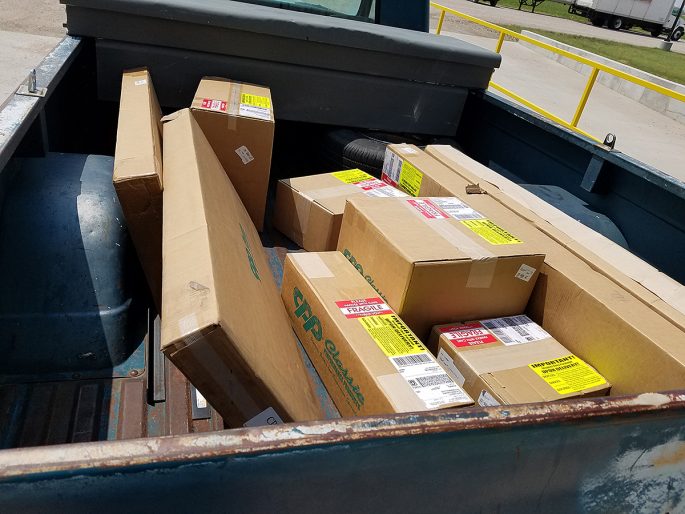
The one last minute change on the truck was an 11th hour swap out of my cracked windshield for one I got from the junkyard. It had been sitting on a shelf in my garage for five years. It was a disaster because the seal I bought was too wide. After swearing, cussing, throwing tools, I just cut the seal in the middle at the bottom in order to get the windshield in.

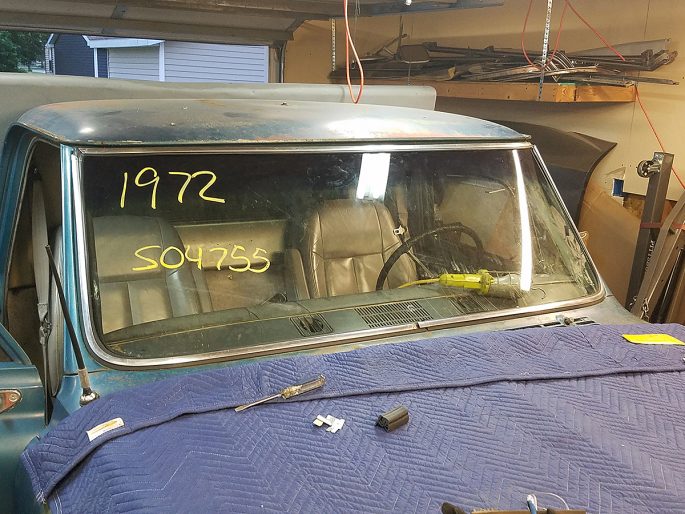
Under the hood was my BluePrint Engine’s 355 that had about 15,000 miles on it. It was one of their aluminum headed engines that was rated at 375 HP/400 ft lbs of torque. Mine dynoed out right around 400 hp/415 ft lbs using BluePrint’s dual plane intake, their HEI distributor and a Holley 600 cfm carb. Behind it was a A833OD four speed trans that GM used in pickups during the 1980’s. Out back, was a Dana 44 with 3.54 gears with a posi of some sort. Obviously, I wasn’t going to be the fastest guy at RMRW, but that isn’t the point. At least, not for me.

I arrived for the start of Rocky Mountain Race Week 2018 a little worried if I would pass tech, but the truck passed with flying colors. I hit the track for my first run with hopes of running in the 14’s, but all I managed to do was wheel hop my way to 16.88 at 80 mph. Hardly the stuff one calls home and brags about.
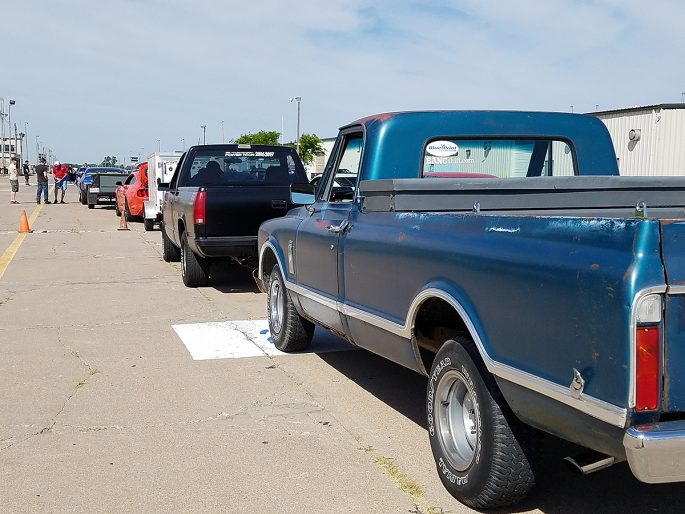
Even though my truck was painfully slow on the track, I was having a blast cruising the back roads of America with a bunch of friends. Chad Reynolds, Cole Reynolds, Bryan Lum, Anthony Noffsinger, Alex Taylor, Debbie Taylor, Scott Brown, Jeremy Stelford, and many more that have become my racing family on these events.

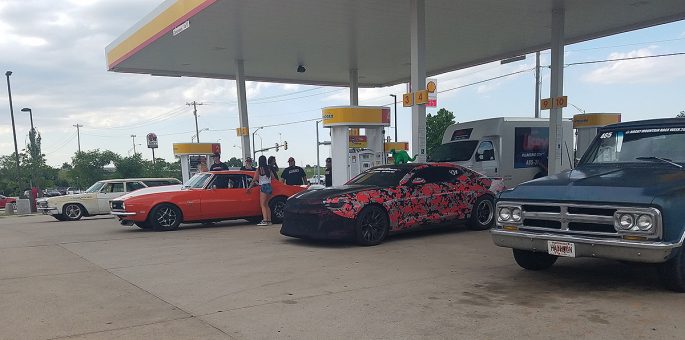
The second day of racing at Heartland Motorsports Park in Topeka, KS. I have raced several tracks over the years but Heartland was by far the biggest facility. But, I was still slow. Cole Reynolds got this shot of me on the return road disgusted by mid-15’s.

With racing not starting until 3 o’clock at Ozark, I had some time to goof off. That resulting me showing up with a power adder connected to the tailgate of my truck. A 1953 Montgomery Ward 5.5 HP outboard motor.

As the week went along. I worked on my launch technique and shifting skills and kept improving. The picture below shows me on my fastest run of the week at Ozark Raceway Park. It was one of those days where I started off running faster than before, and kept going faster with each run. I ended the day with a 15.27 at 88 mph.
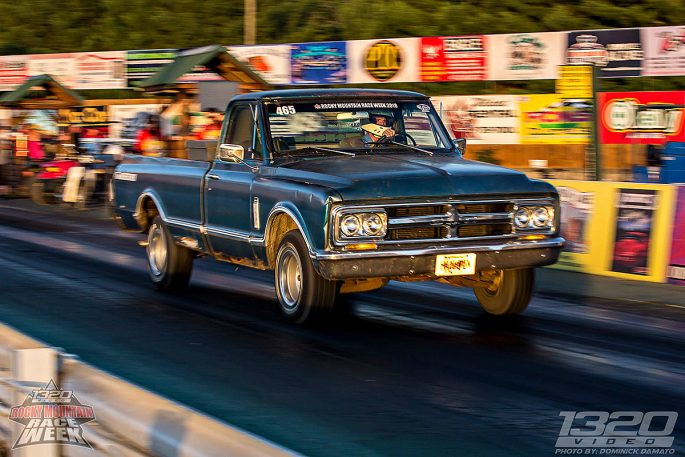
The next morning, while driving to the next track in Noble, OK I heard and felt a loud bang somewhere in the driveline. I couldn’t figure out what it was at the time. The GMC kept driving fine and the engine was still running great, but something was amiss. Chad Reynolds helped me find a shop to look at the truck before the next day’s runs. Travis Cannon lives right near Noble and offered up his shop and rack. After pulling the oil pan down to check things out and finding nothing, I put it back together and decided just to run it.
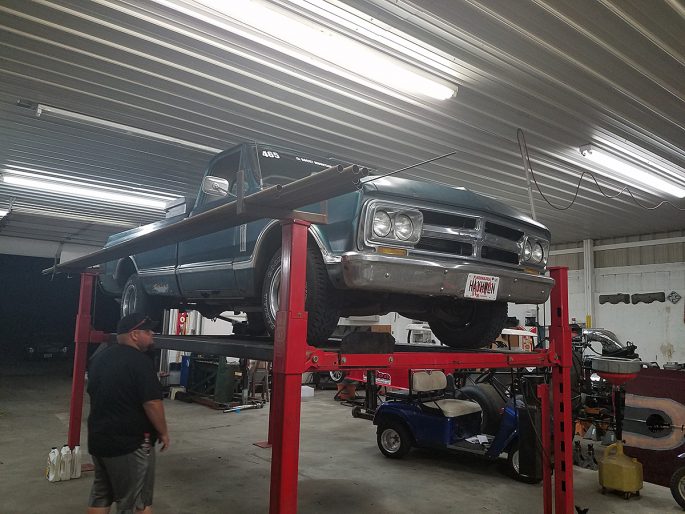
I slowed down to the 15.80’s for both Noble and the last day back at Great Bend. But, the truck finished out the week.
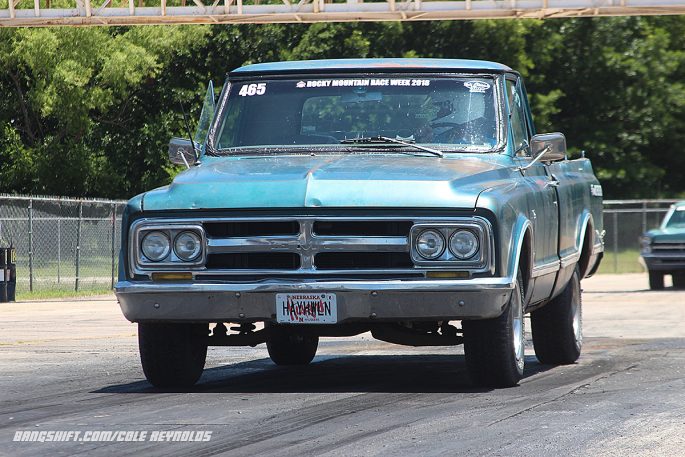
There is an empty space in my soul when events like this are over. Maybe I wish they would go on forever. It was a quiet drive back to Nebraska as I kept thinking of what fun it was and how I already missed my racing family.

Four months later, I shifted from 1st to 2nd gear and started hearing all kinds of bangs and feeling it all the way from the differential to the shifter in my hand. I limped the truck back home with what I thought was transmission full of rocks. So, the truck sat all winter out in the street.
Come this past spring, I was convinced what I broke was the transmission. While it still shifted in every gear just fine, there was horrible noises coming from under the floor. So, I pulled the other A833OD out of my engineless 65 Impala that was languishing in the driveway. I spent two days replacing the transmission in the GMC only to hear the exact same noises as before. Crap!! After a second drive with a friend where we were both hanging out of the windows to listen trying to figure out the source of the noises, we both realized that it was the differential that was definitely messed up.
I pulled the cover off the GMC’s Dana 44 to find several teeth from the pinion and ring gear lying in the bottom of the differential.

I knew the local salvage yard, Andersen Wrecking, had several 67-72 GM trucks and Suburbans tucked away in the back of their yard. Luckily I found a 72 Suburban 4×4 that still had its 12 bolt in it. Looking at the glove box door’s build decal showed it was a 3.73 posi as well. SCORE!!!


$200 later I got what I really wanted for my truck. Andersen’s was nice enough to check out the pumpkin and gears before I picked up the differential. I had always wanted a 12 bolt for the GMC as they are stronger than the Dana 44’s, which fit my plan for towing with this truck.
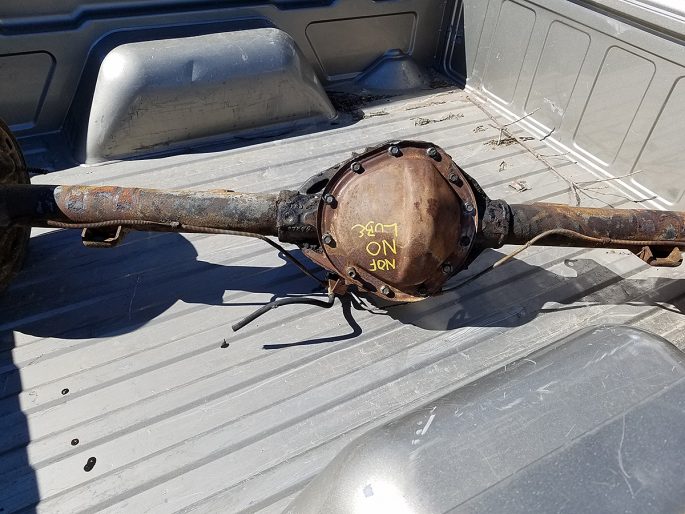
I spent a couple evenings cleaning up the rear axle, replacing seals and going over the brakes.
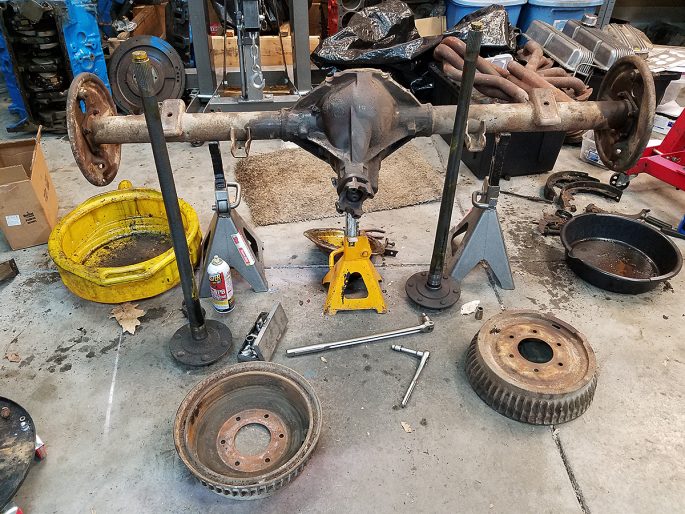
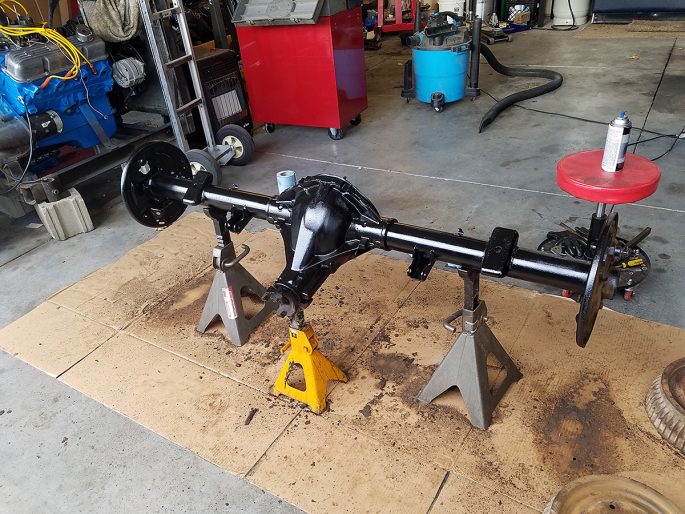
I started at the back and started pulling off the Dana and ancient Rancho shocks. My scrap metal pile was off to a good start.
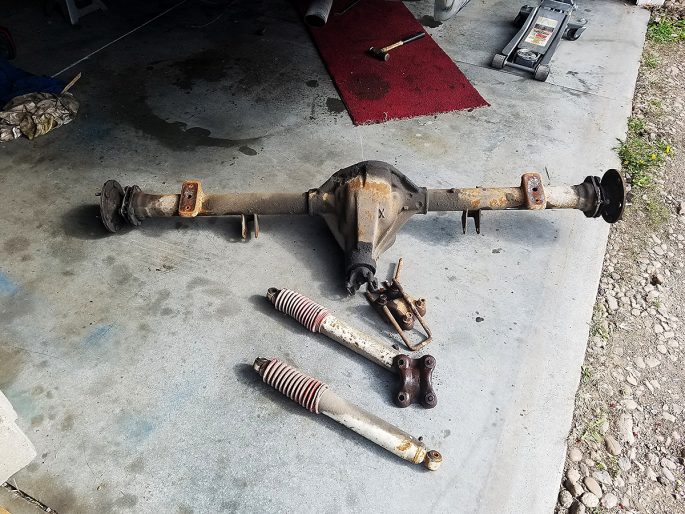
leaf rear leaf springs. A couple of the bolts came off no problem, the others wouldn’t go. I guess this should’ve been expected considering I am working on a 50 year old truck from the rust belt.
It was at this point I decided to invest in a propane torch. I got the tiny one that wouldn’t take up half of my garage from the local supplier for $500. Then I proceeded to cut off the leaf spring, the spring bolts, and spring perches. Major newbie torch user mistakes.
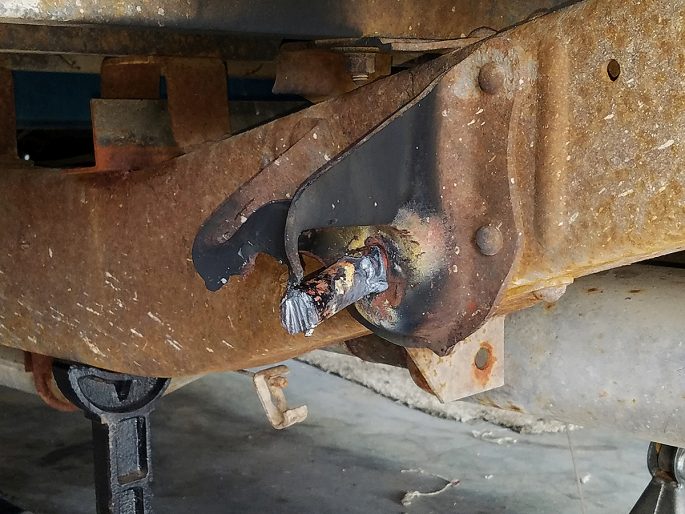
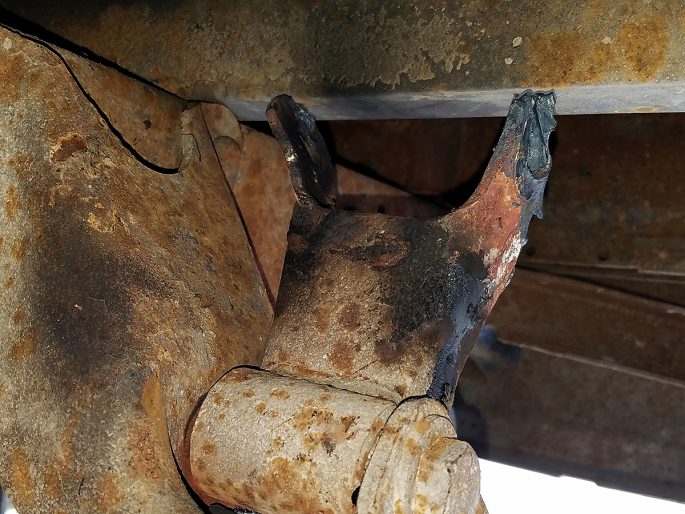
I got lucky to find a mint set of perches off of Ebay. $200 later, I was back in business.
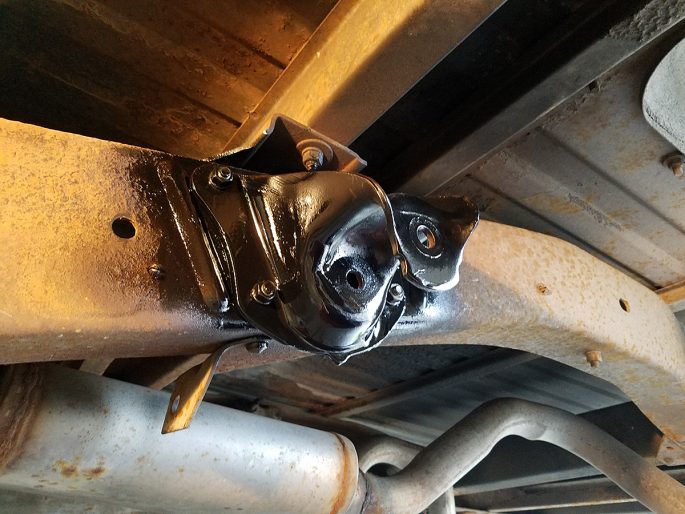
The new leaf springs went right in with no problem. You can see the difference between the original 9 leak spring and the new CPP 4″ lowering spring with only 4 leafs. I looked at a couple 67 and 68 GMC 3/4 tons and they only had 7 leaf rear springs. So, I don’t know where these came from. I can tell you that it road like a buckboard wagon unless there was 500 lbs in the bed.
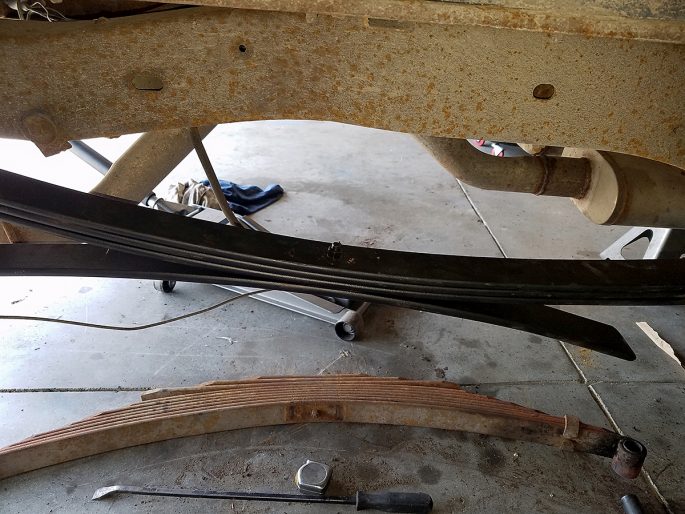

The next step was to install my now cleaned up 12 bolt differential and immediately ran into a problem. It was here that I learned that 2 wheel drive and 4×4 differentials were different in the spacing of the spring pads and shock mounts. They are close to 4 inches closer together on the 4×4 versions. So, another $200 was spent to have the cut off and rewelded back on in the correct positions.
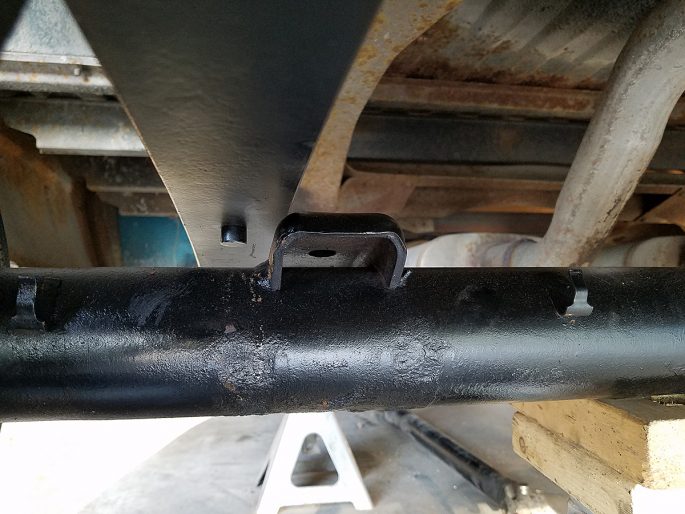
After installing the 12 bolt again, and bending new brake lines, I went after the rear sway bar. This was pretty much straight forward, with the exception that one side was rubbing the tail pipe a tiny bit. It will self clearance, or rub a hole in the tailpipe. Either way, it will solve itself out.
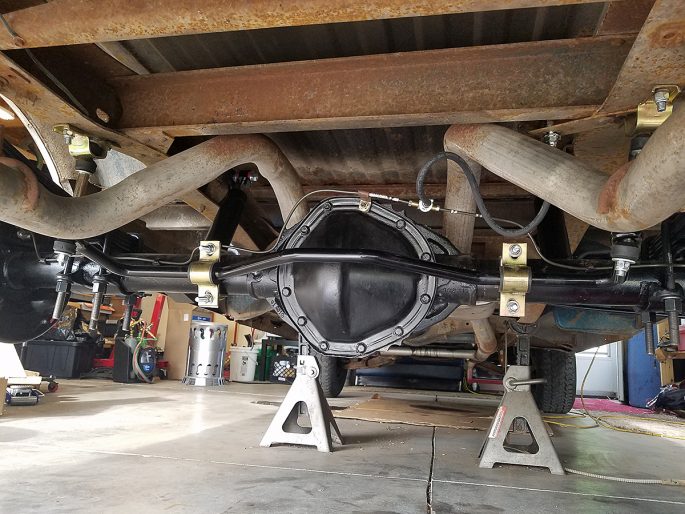
Now, was the time to move up front. I bought CPP basic disc brake kit that utilizes 73-87 era rotors and calipers. I stayed with the six lug style since I had two sets of wheels that were six lug. The good news is that if I ever want to go to five lug wheels, I only need new rotors up front and new axles for the 12 bolt in back. The first thing to do was pull off the drum brakes, rusty shocks, and everything else.
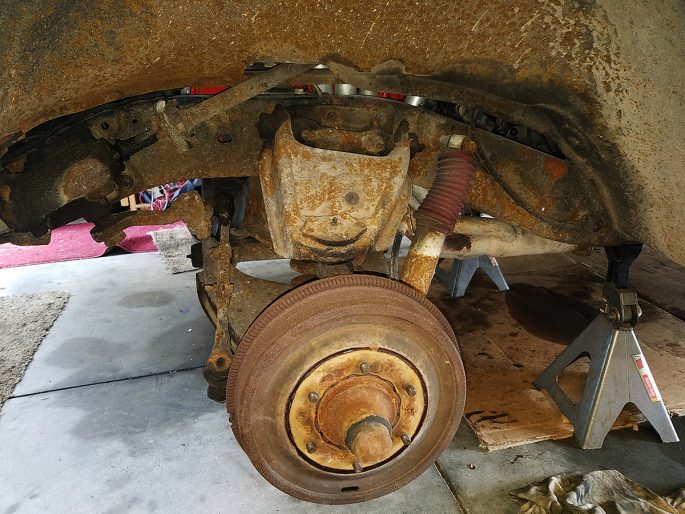
My truck still had the original balljoints on it, so that meant cutting off the rivets on the upper balljoints. I replaced the A Arm shafts even though they don’t appear to be a wear item. At least I couldn’t figure out how they wear. I spent hours cleaning 50 years of petrified grease off the A arms as I was not replacing them.
The kit I put together included 2 inch drop spindles from CPP. I spent more time cleaning the few parts I reused than installing the whole kit. CPP’s brake kits are thorough in that they come with all the necessary hardware, which include brake hoses, bearings, seals, cotter pins, and ball joints. If you have ever done this kind of modification to your car or truck and had to run to the parts store a dozen times for all the pieces and bits to finish the job, you will appreciate CPP’s effort to include as much of parts as possible. I also replaced the tie rods, tie rod sleeves, pitman arm and idler arm.
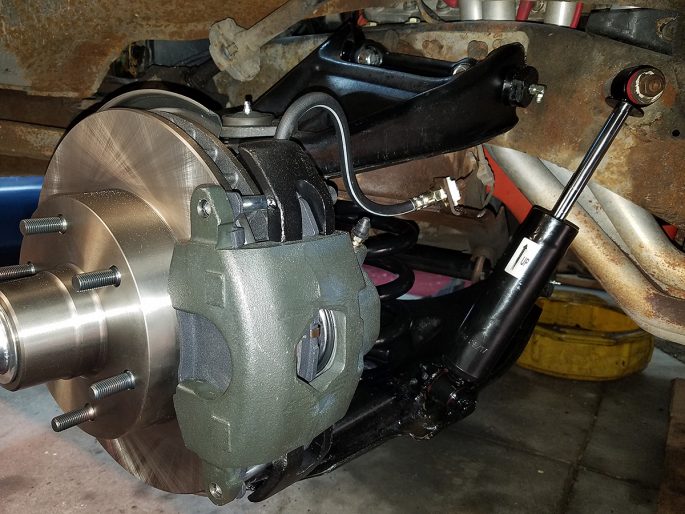

While the truck was still up on jack stands, I went to install the front sway bar. These 67-72’s didn’t have one from the factory for some silly reason, and my GMC wallowed about in making turns because of it. I am hoping the lowering the truck and adding front and rear sway bars will help keep it flat in the turns. I am also hoping it would help when towing my boat.
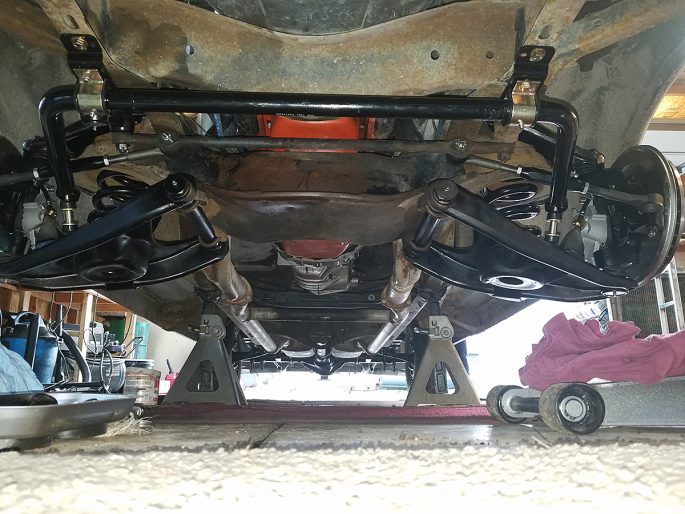
I still needed to replace the drum brake master cylinder and add an adjustable proportioning valve, line lock, and new brake lines. Because I was wanted something specific in my design, I got all this stuff from Summit Racing. I still need to wire up the line lock’s switch, but haven’t decided where I want to put the switch.

Since I replaced every part of the brakes, the system was completely dry of brake fluid. In order to make bleeding the brakes easier, I opened all the bleeder screws, then used some old vacuum hoses and four empty beer bottles to get a lot of the air out of the system before starting to pump the brakes to bleed them. I let them sit for a while and it worked pretty good. Bleeding the brakes was not a fight.
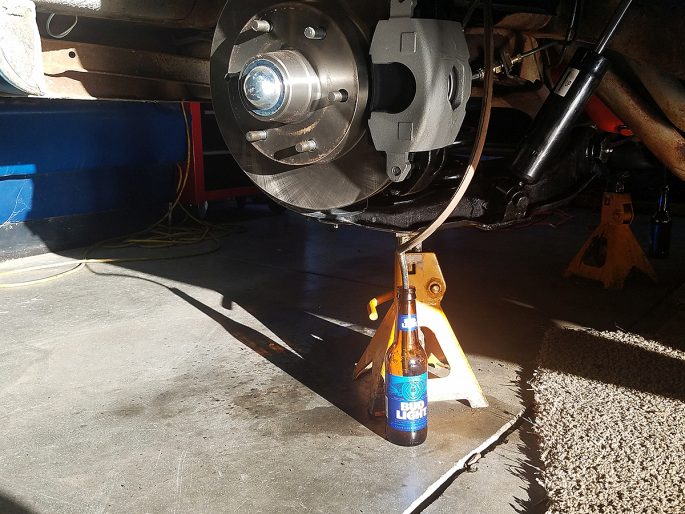
After a couple days of test drives to be sure everything was good with no leaks and a solid brake pedal, I hooked up my boat to test how the truck towed it. The easiest way was just to haul the boat around when running errands. After I fixed the boat, we took it out on a local lake. The old GMC did just fine on the boat launch ramp. Though, I have to say, people seem to be weirded out at the sight of a slammed 50 old truck hauling boat. There were plenty of people gawking, shocked it worked. I guess I missed that unwritten rule that you need a near new $60,000 truck to haul a small boat.

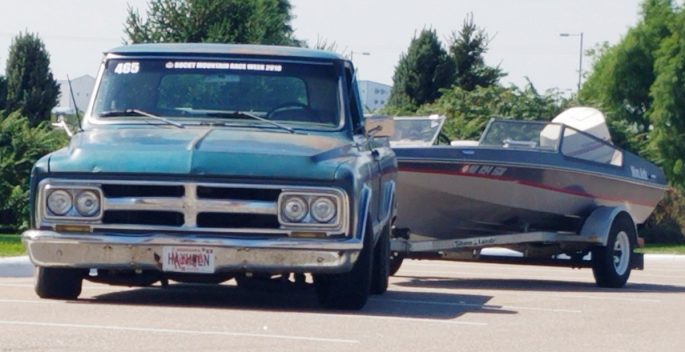
This truck has come along way in the five years that I have owned it. Compare the picture of when I first bought it to now. Stay tuned to see another update soon where we build a new engine for more horsepower.


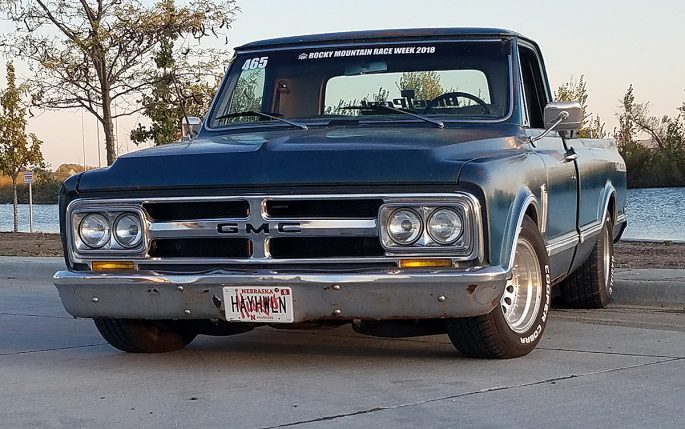







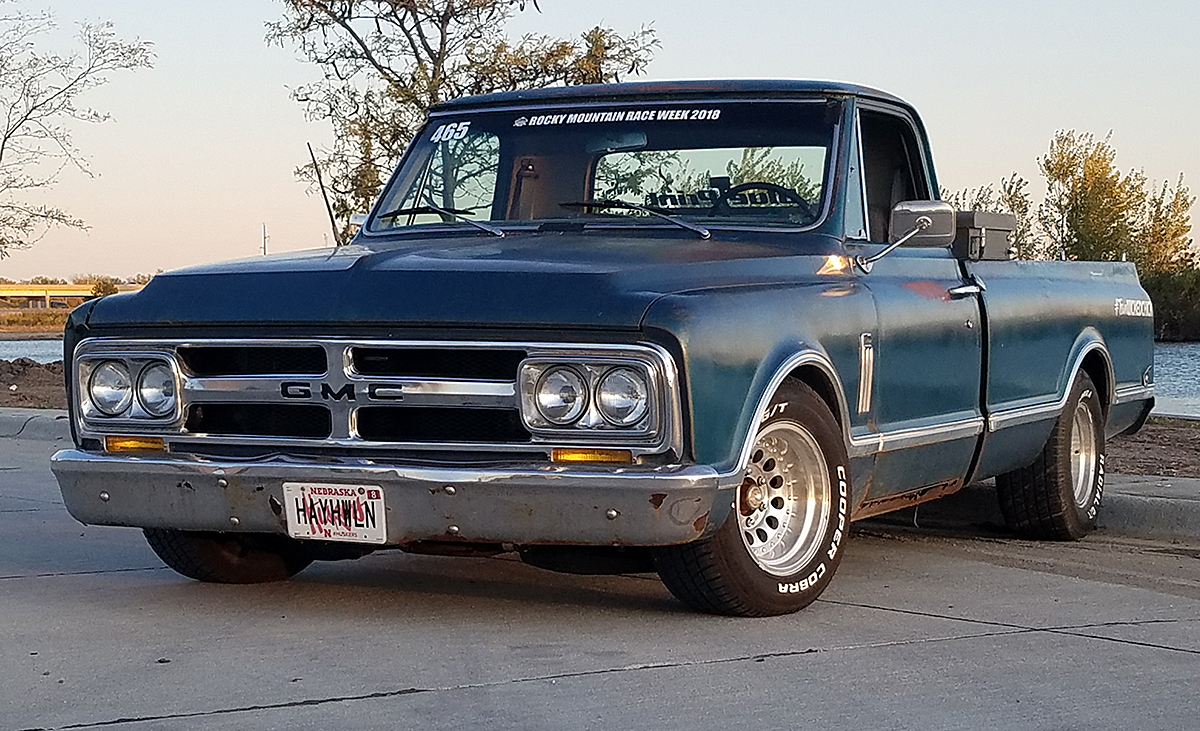





It’s always nice to see what’s going on with your truck, knowing you daily-drive this stuff.
I like the lowererd stance. Gives it a tougher attitude.
” even though they don’t appear to be a wear item”, Oh yeah they are. I’ve replaced a bunch of them after people forget what grease fittings are for. Looks good too!
Thanks for sharing. I enjoyed the read.